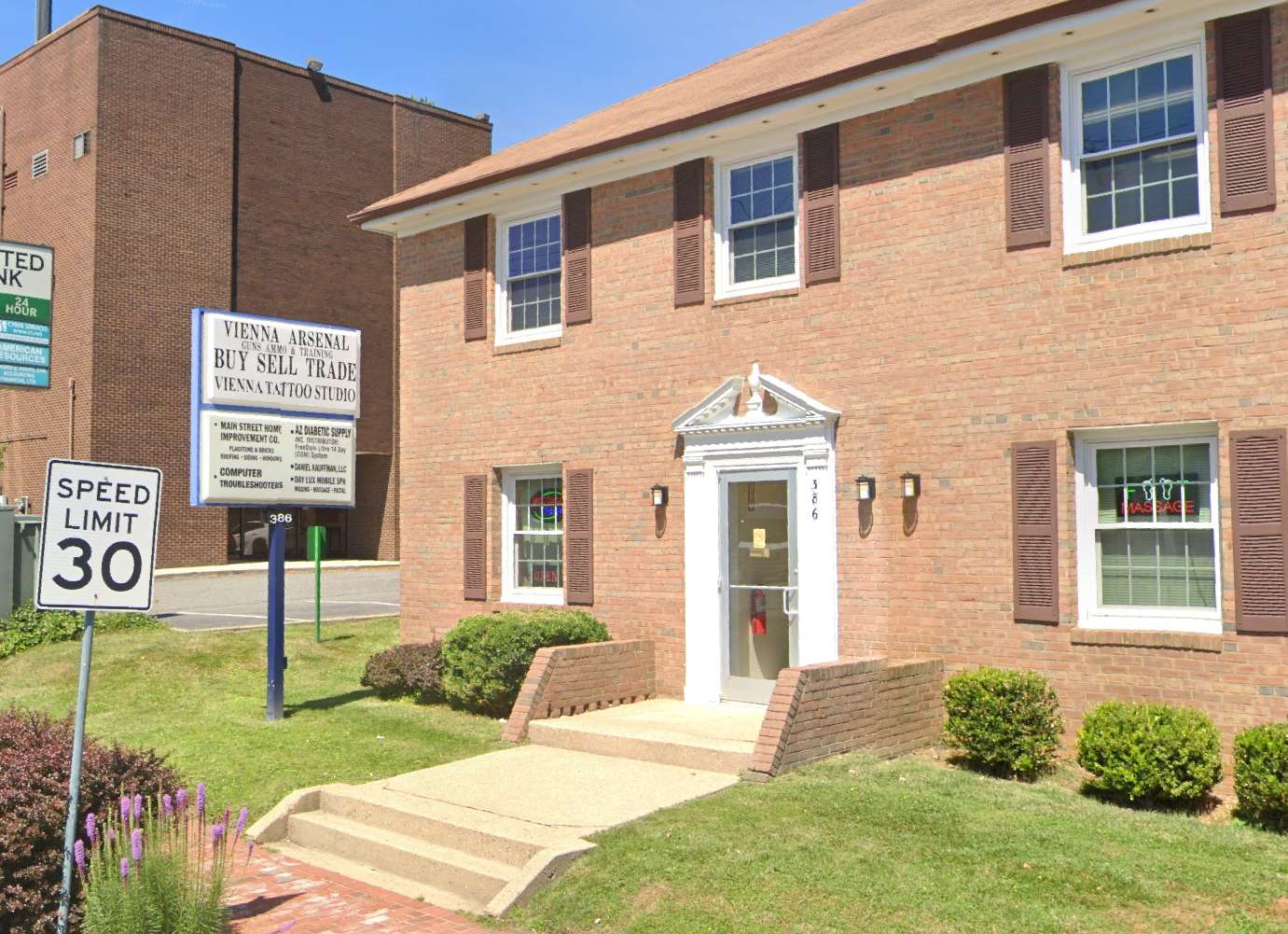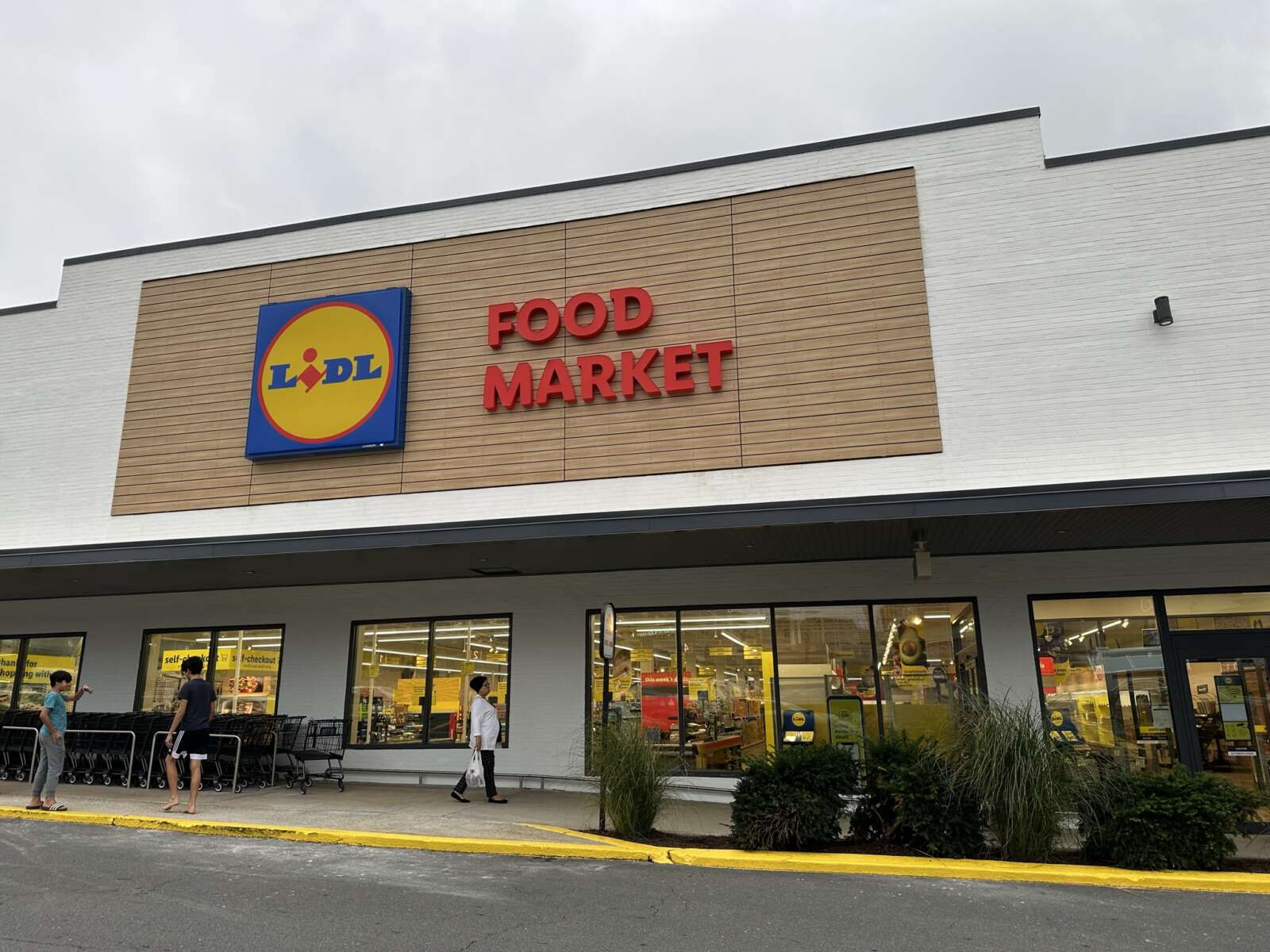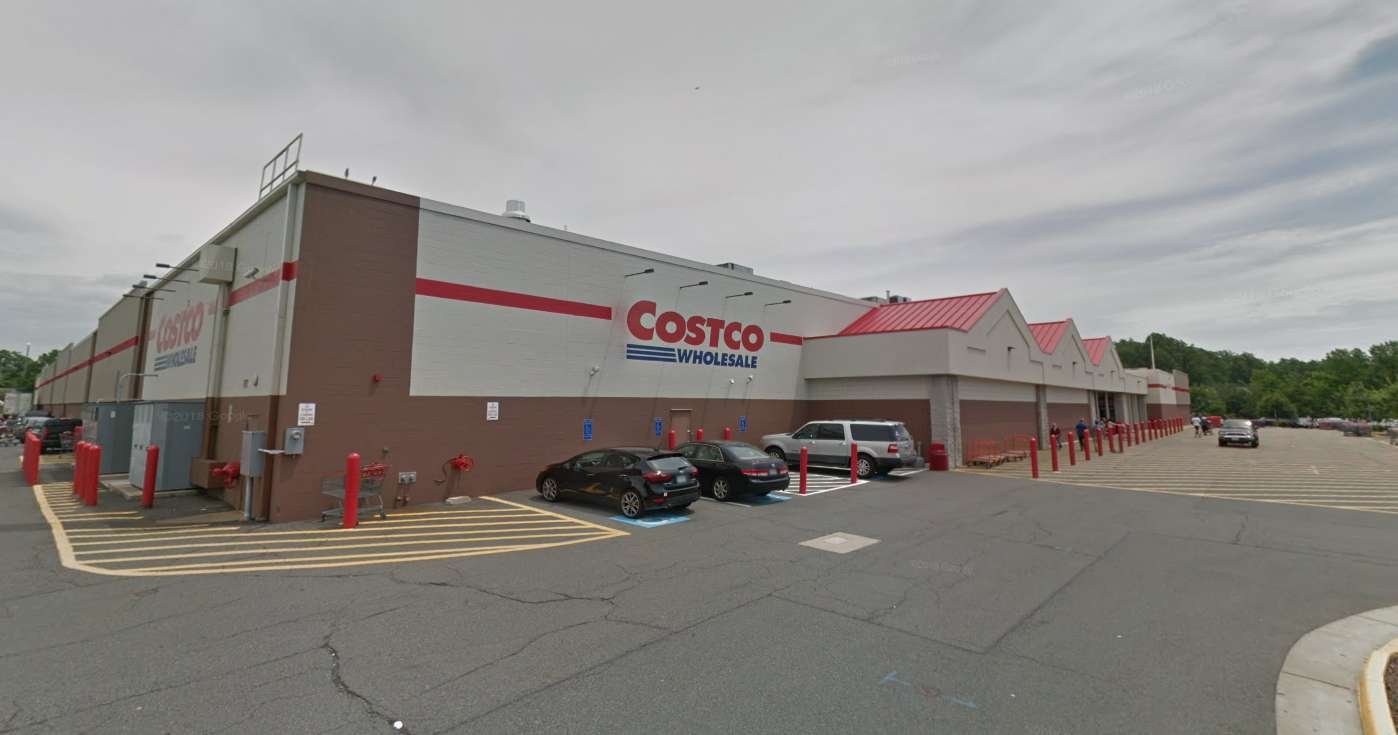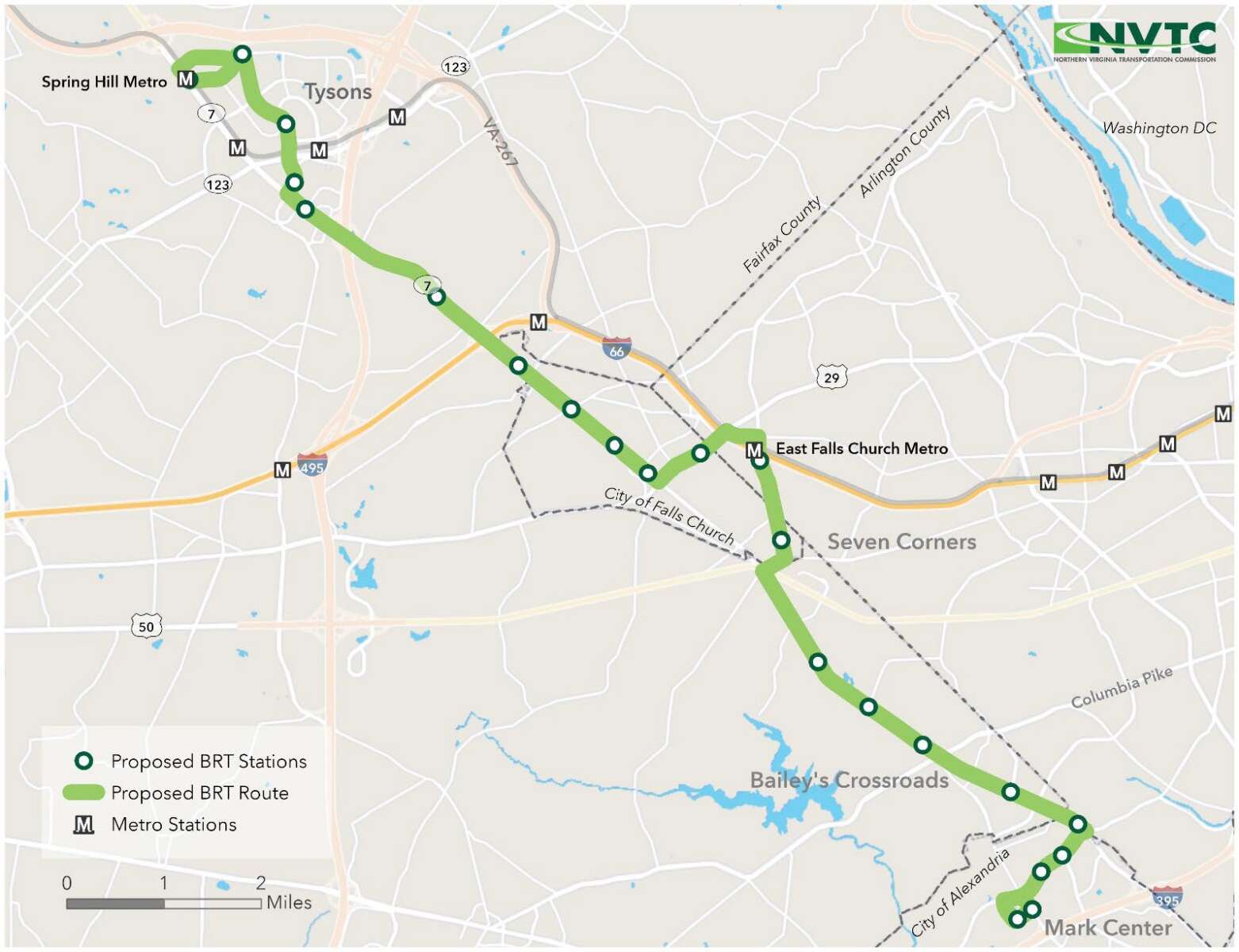
Tysons is the business hub of Northern Virginia, and there’s no business like show business.
Four Broadway shows will be coming to Capital One Hall as part of the 2024-2025 season of Broadway in Tysons.
The shows will be, both in order that they’re coming to Tysons and in worst-to-best order of quality: Shrek the Musical, Dear Evan Hansen, Come From Away and Chicago.
Tickets will go on sale starting Monday, May 6 at 10 a.m.
This is the fourth year of Broadway in Tysons. One show from the current season, Little Women, will run from May 17-19.
According to the release, the schedule for the upcoming season is: Read More

The Vienna Police Department said two men burgled Vienna Gun & Gold (386 Maple Avenue) late last month, fleeing with a cache of stolen firearms.
Police said the burglary occurred at 11:15 p.m. on March 29.
“The owner of the store was alerted that the alarm was activated in the store,” the report said. “On his security camera, he advised the dispatcher that he saw five to six people in the store stealing guns.”
Vienna Police responded and found two men fleeing the store with the guns. The men got into a car and fled, but police did not pursue them because an earlier report said there were five to six people in the store stealing guns.
According to the report:
When officers arrived, they observed two men fleeing the store with firearms. The men refused to obey the officers’ commands, got into a vehicle, and fled the area. With the information that there were still more suspects inside the building, the officers could not pursue the vehicle. Fairfax County Police Department K-9 unit and helicopter responded to assist.
Police did not find anyone else inside the building and, while the area was searched, the report said no suspects were located and the case remains an active investigation.
Image via Google Maps

The Fairfax County Park Authority is celebrating spooky season with a bat-focused festival next weekend.
The 2023 Bat Festival is scheduled for Sunday, Oct. 29, from 3-6 p.m. at the Wolf Trap National Park for the Performing Arts (1551 Trap Road).
Fairfax County is home to eight different species of bats, with big brown bats and Eastern red bats as the most commonly seen, according to the county’s wildlife management department.
“Come celebrate the captivating world of bats, learn about the vital role they play in our ecosystem, understand the threats they face and what you can do to protect them,” Fairfax County said in a release.
A pair of experts will be on hand to help “unveil the mysteries” behind the creature and talk about the challenges they face.
“Enjoy interactive activities for all ages and join our optional costume contest,” the event website said.
The educational tables and costume contest are scheduled for 3 p.m., followed by bat expert presentations at 4 p.m. and a bat listening demonstration at 5:30 p.m.
Guests are encouraged to bring picnic blankets, chairs, food and beverages. Registration is free online.
Photo via Clément Falize/Unsplash
Buildings that once housed inmates are instead being used to care for infants and toddlers.
This past weekend, Brynmor Early Education & Preschool (9060 Power House Road) held a grand opening in Liberty Market, a redevelopment within what was once Lorton Reformatory.
“The center will begin operations October 16, eventually welcoming up to 156 children into two historic buildings that once served as maximum-security units at the heart of the old prison complex,” a release from Brynmor said. “In place of the cell blocks are whimsical, light-filled rooms for infants, toddlers, and preschoolers. A courtyard between units now boasts a grassy play area with a cement tricycle racetrack, climbing logs, and a ‘mud kitchen.'”
The new facility brings much-needed new childcare to Northern Virginia as part of a development that also includes apartments and retail.
Until 2001, the facility was a prison built in 1916 and notable for its role in women’s suffrage, a chapter in history detailed by the Lucy Burns Museum that opened in early 2020.
Between 1917 and 1919, a group of women called the Silent Sentinels protested outside the White House. Many of them, including Alice Paul, were arrested and taken to the Lorton prison. They were beaten and subjected to force-feeding, acts which drew national attention to their cause.
Now, the prison has been transformed into the Workhouse Arts Center and Liberty Market, a shopping/dining destination with 352 new residential units. At the center of that new development, Brynmor Early Education & Preschool will be offering classes for children from 6 weeks old through 5 years old.
The school was founded by CEO Rhian Evans Allvin, who previously led the National Association for the Education of Young Children (NAEYC). She says her goal is for Brynmor’s flagship facility to give the youngest children the “developmental start they need to thrive in life.”
“I am pleased to welcome Brynmor to Liberty to provide much needed child care within this new community,” Mount Vernon District Supervisor Dan Storck said in a release. “This is a great day for our youngest Lorton residents.”
Over at the Workhouse Arts Campus (9518 Workhouse Way), more former prison buildings are being refurbished, with a second location for Fairfax’s Bunnyman Brewing slated to open in one of them.

There’s a new shop in Merrifield focusing on an eclectic, “curated collection” of handcrafted goods.
Vivid Chill hosted a grand opening this past weekend in the Mosaic District, moving into Suite 150 at 2910 District Avenue from a spot in Great Falls.
The shop offers everything from jewelry and clothing to books, face oils and playdough.
According to Vivid Chill’s website, its focus is on “handcrafted, ethically made, sustainable, nontoxic, eco-friendly” goods.
Originally opened at Great Falls Village Centre in early 2021, the shop won a spot on Washingtonian’s Best New Shopsof 2021 list, which highlighted owner Marika Tsombikos’s dedication to selling only the best assorted items she can find, typically with clean design and bright colors.
Vivid Chill’s website says the store is open from 11 a.m.-8 p.m. Monday-Saturday and from noon to 6 p.m. on Sunday.

German-owned grocery chain Lidl is almost ready to unveil its brand-new location in the heart of Tysons.
Next week, the chain is opening a new store in Pike 7 Plaza (8387 Leesburg Pike) with a pair of events.
An “open house” is scheduled for Tuesday, Oct. 3, from 5-7 p.m. The event will be open to all ages, with face painting for children and a chance for community members to tour the store and sample wares.
Lidl officially opens on Wednesday, Oct. 4. The store will launch with a ribbon-cutting ceremony at 7:45 a.m., followed by special offers on a first-come, first-served basis.
“The first 100 customers in line before the store opens at 8:00 a.m. will receive a special gift card ranging from $5 to $100 each,” Lidl said in a release. “Shoppers can also sample Lidl’s award-winning assortment and take advantage of special giveaways.”
The store will be open from 8 a.m.-9 p.m. every day.
Lidl is also pushing its “myLidl” membership program. The release said $1 will be donated to the nonprofit Capital Area Food Bank for every new member who signs up and sets the new store as their home page.
Lidl has been expanding its presence in Fairfax County recently, adding locations in Chantilly, McLean and Lorton over the past two years. The grocery store can also be found in Merrifield, Fairfax, Burke, Springfield and Lincolnia.
Elsewhere in Pike 7 Plaza, construction has begun on a new, standalone building for Shake Shack in the southeastern corner of its parking lot. The restaurant will feature a “drive-up” window and support curbside pickups.

Shoppers at the Route 29-adjacent Costco might notice some major changes soon.
The wholesale company is seeking a special exception from Fairfax County to increase the size of its existing retail warehouse at 4725 West Ox Road by around 8,500 square feet and enhance some of the store’s departments.
The new addition would be located to the eastern side of the building.
“The additional space proposed for the existing warehouse building would be utilized for upgrading and expanding the delicatessen and rotisserie area, increasing the size of the refrigerated meat storage space, constructing a new produce cooler, and expanding sales aisles,” the application said. “There will be slight increase in [floor area ratio].”
The application says Costco’s Fairfax area location is a popular one, with around 5,000 customers per day. The expansion is estimated to bring in another approximately 300 customers.
The company also anticipates hiring another 16 employees if the addition is approved, bringing its total workforce for that location to approximately 286 people.
The expansion is expected to result in dozens more vehicle trips to the already heavily frequented site, according to the application:
- 26 AM peak hour trips (14 in/12 out)
- 37 PM peak hour trips (18 in/19 out)
- 63 Saturday peak hour trips (31 in/32 out)
- 417 weekday average daily trips (7,453 Weekday average trips total)
- 753 Saturday average daily trips (8,218 Saturday trips total)
“The proposed expansion of the retail warehouse building will provide a significant improvement to the operation of the facility for Costco’s members,” the application said. “The proposed amendment conforms to the spirit of the Zoning Ordinance and the recommendations of the Comprehensive Plan. Therefore, for the reasons set forth herein, the Applicant respectfully requests approval of this Special Exception Amendment application.”
The county accepted the application for review on Sept. 6, but no hearings have been scheduled yet.
The proposal comes after Costco got the Fairfax County Board of Supervisors’ approval in March to expand the gas station at its West Ox location from 16 to 30 fuel pumps.
Image via Google Maps

The McLean Citizens Association (MCA) has thrown its voice behind some new design guidelines for downtown McLean.
At a meeting next Tuesday, the Fairfax County Board of Supervisors will consider endorsing Vol. 2 of the District Design Guidelines for the McLean Community Business Center. The guidelines are non-binding, but could shape what development in McLean looks like for the foreseeable future.
The MCA voted unanimously to support new District Design Guidelines.
“These have been under consideration now for more than a year,” said Robert Perito. “These two volumes are designed to be used together by developers and others when proposing, designing or reviewing projects in McLean.”
Volume two follows some earlier foundational design guidelines, and the new version contains written guidance and visual suggestions for the design of streets, lighting and building frontage. The 134-page document details some of the principles behind building design in downtown McLean and specifications surrounding things like streetscape design.
“This has been a very good project,” said Perito. “It has reached a very successful conclusion.”
One MCA member asked about the incentives for developers to follow the guidelines.
“They are suggestions, not regulations,” Perito said. “The idea is to provide developers with good ideas and hope they’ll follow.”
Perito noted that the Mars Corporation, in redesigning their building, had planned to install a futuristic-looking bus station outside the new building. When case managers showed them the District Design Guidelines, the corporation changed the design to fit in with the town’s standards.
The feeling among the people who have done this… people who want to develop within McLean will follow these,” said Perito.

A new bus rapid transit (BRT) route could connect Alexandria and Tysons, and the golden spike in that project could be Falls Church.
The Northern Virginia Transportation Commission (NVTC) is reviewing a study of Envision Route 7’s impact on Falls Church. The study doesn’t make recommendations but provides analysis on how BRT might impact bus and car traffic in Falls Church.
According to the NVTC agenda:
The Commission will be asked to accept the findings of the Envision Route 7 Phase 4-1 Mobility Study, a key element of the fourth phase of planning for a Bus Rapid Transit (BRT) system designed to connect the Mark Center in Alexandria to Tysons via Bailey’s Crossroads, Seven Corners and Falls Church along the Route 7 corridor.
The study included a variety of scenarios for how the BRT route could run through Falls Church, from a “no-build” option to full transit lanes, along with various “hybrids” inbetween.
Unsurprisingly, the scenarios with the higher number of dedicated bus lanes having the largest travel time decrease for buses, though travel times would also increase for cars and other vehicles.
The study also included feedback from public engagement, which determined 60% of respondents agreed improving bus speed and reliability was a high priority, though there was also concern about how the changes might impact bicyclist safety.
The full report is available online.
NVTC is working with Falls Church throughout this fall to develop a preferred scenario, with the project going to various boards and commissions in Falls Church, Fairfax, Alexandria and Arlington this winter.
Image via NVTC/Twitter

The area around Tysons Galleria (8025 Galleria Drive) might be a little livelier than usual as Cirque du Soleil brings a new nature-themed show to Tysons tonight (Wednesday).
The new show, ECHO, launches tonight at 7:30 p.m. and will run every Wednesday-Sunday until Sunday, Oct. 22.
The program launched in Montreal in April but tonight marks the debut of ECHO in the United States.
“Cirque du Soleil is proud to debut its newest Big Top show, ECHO, directed by Mukhtar Omar Sharif Mukhtar,” a release said. “Washington, DC will kick off the U.S. leg of the tour on Sept. 6, 2023. This is the first time in the show’s history that the nation’s capital will host the U.S. premiere.”
The program features the usual mix of acrobatics and vocals, with a fantasy-themed storyline.
“Creation should always be at the heart of Cirque du Soleil, and one of our biggest excitement anchors itself in our ability to deliver a new show to our audience,” Mukhtar said in the release. “ECHO will push the values of connection, inspiration and the power of intention.”
Ticket prices vary by seating, ranging from $44 tonight and $64 on weekends to $199 front-row seats.

